Photographic Safaris
A photographic safari to Tarangire National Park, Ngorongoro Crater, and Serengeti National Park is an incredible journey through some of Tanzania’s most iconic landscapes, offering unmatched opportunities for wildlife photography. Here’s a detailed overview of what you can expect from a photographic safari to these three renowned destinations.
1. Tarangire National Park
Overview:
- Location: About 120 km (75 miles) southwest of Arusha in northern Tanzania.
- Size: Approximately 2,850 square kilometres (1,100 square miles).
- Highlights: Known for its large elephant herds, ancient baobab trees, and diverse birdlife, Tarangire offers rich photographic opportunities, especially during the dry season when animals congregate around the Tarangire River.
Photographic Opportunities:
- Elephants: Tarangire is home to one of the highest densities of elephants in Tanzania. Capturing these majestic animals against the backdrop of baobab trees or during dramatic sunset scenes provides striking images.
- Birdlife: With over 550 species, including the vibrant, yellow-collared lovebird and the endemic ashy starling, bird photography enthusiasts will find plenty to capture.
- Landscapes: The park’s varied terrain, from open grasslands to riverine forests and swamps, provides diverse backgrounds. The iconic baobab trees offer unique silhouettes, especially during sunrise and sunset.
Tips for Photographers:
- Early Morning and Late Afternoon: These times offer the best lighting for photography, with softer light and more active wildlife.
- Patience and Timing: Be patient to capture unique behaviours or interactions, such as elephants bathing or birds in flight.
- Lenses: A telephoto lens (200-400mm or more) is essential for wildlife, while a wide-angle lens is useful for landscapes.
2. Ngorongoro Crater
Overview:
- Location: Part of the larger Ngorongoro Conservation Area, about 180 km (112 miles) west of Arusha.
- Size: The crater floor is approximately 260 square kilometres (100 square miles), making it the world’s largest inactive, intact, and unfilled volcanic caldera.
- Highlights: The Ngorongoro Crater is known for its stunning scenery and high density of wildlife, including the Big Five (lion, elephant, buffalo, rhino, and leopard). Its enclosed ecosystem makes it one of the best places to see large animals up close.
Photographic Opportunities:
- Big Cats: The crater is home to a large population of lions and provides good chances to photograph cheetahs and leopards.
- Black Rhinos: Ngorongoro offers one of the few opportunities in Tanzania to photograph the critically endangered black rhino.
- Flamingos and Birdlife: During certain times of the year, Lake Magadi, a shallow soda lake on the crater floor, is filled with pink flamingos, offering spectacular photographic scenes.
- Scenic Views: The vantage points from the crater rim provide breathtaking panoramic views. Photographing the descent into the crater offers a chance to capture its scale and beauty.
Tips for Photographers:
- Wide-angle Lens: To capture the vast landscapes and the crater’s sweeping views.
- Telephoto Lens: Essential for close-up shots of wildlife from a distance.
- Mid-day Photography: The crater’s walls can create harsh shadows, so be mindful of the lighting and use it creatively to add depth to photos.
3. Serengeti National Park
Overview:
- Location: Extends over 14,750 square kilometres (5,700 square miles) in northern Tanzania, connecting to the Maasai Mara in Kenya.
- Highlights: Renowned for the Great Migration, where over two million wildebeest, zebras, and gazelles move in a circular route across the Serengeti and into Kenya’s Maasai Mara. The park is also home to a high density of predators, including lions, cheetahs, and leopards.
Photographic Opportunities:
- Great Migration: One of the world’s most spectacular wildlife events, the migration offers dramatic scenes of river crossings, where wildebeest and zebras brave crocodile-infested waters. Timing your visit with the migration can yield unforgettable photographic moments.
- Predators in Action: The Serengeti’s open plains make it easier to spot and photograph predators like lions and cheetahs. Capturing hunts or predator-prey interactions is a highlight for any wildlife photographer.
- Diverse Landscapes: From the endless plains of the Central Serengeti to the rocky kopjes (granite outcrops) that serve as lion lookouts, the varied terrains offer different photographic settings.
- Sunrises and Sunsets: The Serengeti is famous for its stunning sunrises and sunsets, with the vast sky turning brilliant hues of red, orange, and pink, creating dramatic silhouettes of acacia trees and animals.
Tips for Photographers:
- Golden Hour: The best time to capture the magic of the Serengeti is during the early morning and late afternoon, when the light is soft and warm.
- Patience: Wait for the perfect moment, especially during river crossings or predator-prey interactions. Use continuous shooting mode to capture action shots.
- Landscape Photography: Use a wide-angle lens to capture the vastness of the Serengeti plains and the drama of the sky.
General Tips for a Photographic Safari
Equipment:
- Cameras: Bring a reliable DSLR or mirrorless camera with multiple memory cards and spare batteries.
- Lenses: A combination of lenses, including a telephoto (200-400mm or more), wide-angle (16-35mm), and a standard zoom lens (24-70mm), will cover most situations.
- Stabilization: A monopod or bean bag can help stabilize your camera in vehicles.
- Protection: Dust is a common issue; bring lens cleaning equipment and protective gear for your camera.
- Safari Vehicle Setup: Choose a safari vehicle with open sides or pop-up roofs to provide unobstructed views. Private or small group safaris allow for better manoeuvring and positioning for photographs.
- Respect Wildlife: Maintain a safe distance and avoid disturbing animals. Use a long lens to capture close-up shots without encroaching on wildlife.
- Stay Alert and Ready: Wildlife encounters can be sudden and brief. Always have your camera ready and set to the appropriate settings.
Travel and Logistics
Best Time to Visit:
- Tarangire: June to October is the dry season, when wildlife gathers around the Tarangire River.
- Ngorongoro Crater: Year-round, but the dry season (June to October) offers better visibility for wildlife.
- Serengeti: Depending on the migration, December to July for the wildebeest calving and river crossings; June to October for the best game viewing.
- Packing: In addition to photography gear, pack light, comfortable clothing in neutral colours, a hat, sunglasses, sunscreen, and insect repellent.
- Health Precautions: Consult a travel doctor about vaccinations and malaria prophylaxis. Carry a personal first-aid kit.
Conclusion :
A photographic safari through Tarangire, Ngorongoro, and Serengeti offers unparalleled opportunities to capture the essence of Africa’s wildlife and landscapes. By planning carefully, being prepared with the right equipment, and understanding animal behaviour, you can capture images that tell the story of this remarkable part of the world

